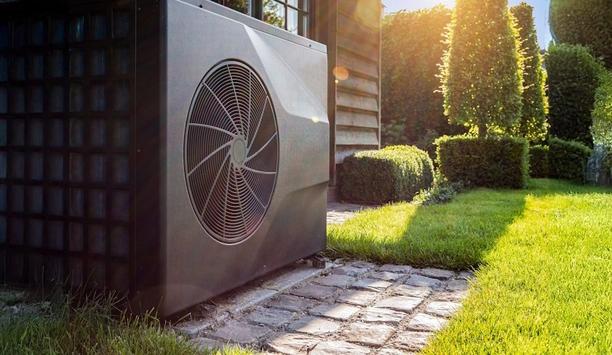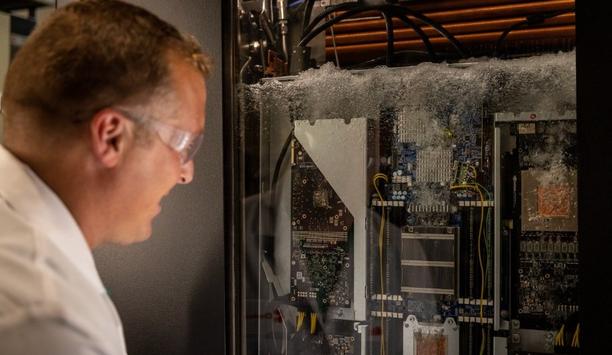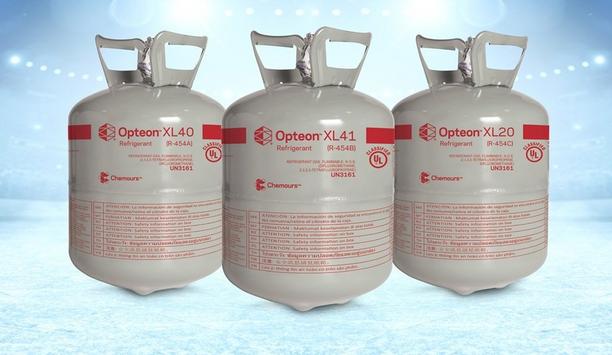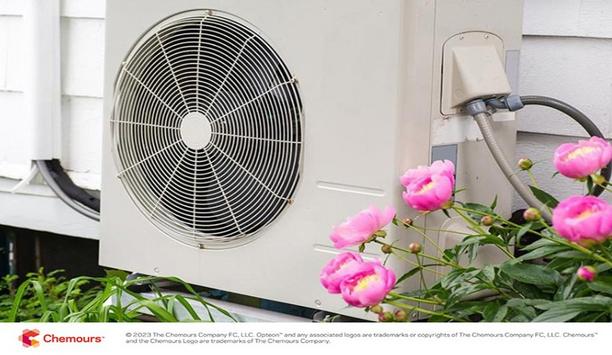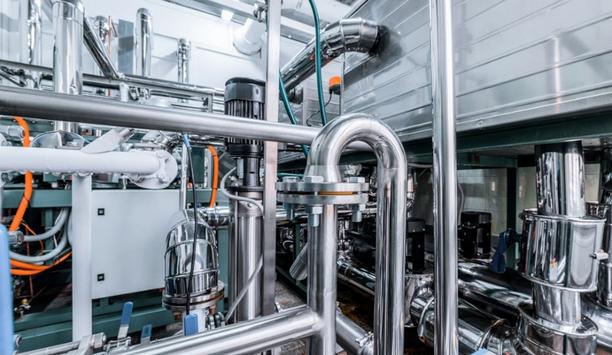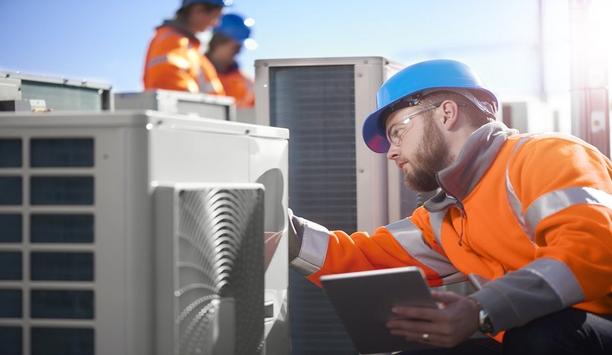The Chemours Company News
“If you don’t like the weather in New England, just wait a few minutes.” To this day, Mark Twain’s quote is used to describe quickly changing weather conditions in regions throughout the United States, United Kingdom, and elsewhere. However, in contrast to the weather, the climate change being experienced globally is creating nontraditional conditions that are much more permanent. Consequently, HVACR systems are being subjected to a new set of conditions that, if not ad...
The COVID-19 pandemic has significantly impacted how we view indoor air quality and HVAC systems. Consequently, HVAC systems have undergone several improvements in the post-pandemic world. Systems today tend to have better filtration, increased ventilation, and advanced air-cleaning technologies, such as UV-C light and bipolar ionization. We asked our Expert Panel Roundtable: How have HVAC systems improved (including better indoor air quality) in the post-pandemic world?
Data centers worldwide are under intense pressure. High-powered computing is a global necessity that seemingly gets more demanding by the day. There’s also the need to prioritize sustainability improvements ranging from resource conservation to decarbonization. And data centers must consider their bottom line and remain competitive. Anticipating the challenges data centers will continue to face, scientists and engineers have innovated two-phase (2-PIC) immersion cooling. With the capacit...
Until a couple of years ago, most of the talk about heat pumps occurred around this time of year, when more than half the planet prepares for an autumn cooldown. These discussions were typically limited to regions that only experienced moderate winters. But as anyone who has recently perused an HVACR trade magazine or website—or participated in an industry webinar, event, or social media conversation—can tell you, the topic of heat pumps is virtually unavoidable. Not only do heat p...
Achieving net-zero emissions will mitigate climate change and prevent the worst impacts of global warming. Net zero is the state in which the total amount of greenhouse gases emitted into the atmosphere is equal to the total amount removed. HVAC systems represent a large opportunity to impact how soon we can achieve net zero. We asked our Expert Panel Roundtable: What is the role of HVAC in achieving net-zero emissions by 2050?
By now, the HVAC industry is well versed in, and operating successfully with, various HFC refrigerant production and consumption reduction schedules put forth by regulatory bodies. Under the EPA American Innovation and Manufacturing (AIM) Act, for example, the U.S. experienced a significant reduction (another 30%) in January 2024, advancing the goal of an 85% HFC phasedown from historic baseline levels by 2036. And the EU is working toward its stated objective of an HFC phaseout by 2050. tech...
From temperate climates that reach mid-90 F in June and mild winters allowing people to be outdoors without jackets to the “May flowers” that bloom in early March, it’s evident that society is experiencing World Refrigeration Day’s 2024 theme: “Temperature matters.” In addition to driving climate change, global warming is driving changes in how people live and how industries adapt and innovate to support new dynamics. This is especially true for the HVACR Indu...
SNAP Rule 26 marks an important milestone in the transition from commercial refrigeration to new refrigerants. The rule lists refrigerant substitutes that provide a spectrum of technological solutions to meet required performance, global warming potential (GWP), safety, and environmental standards. SNAP stands for Significant New Alternatives Policy, a program by the U.S. EPA (Environmental Protection Agency) under the Clean Air Act. In general, the program aims to evaluate and regulate...
By now, most of the HVACR industry is familiar with the HFC phasedown portion of the U.S. EPA American Innovation and Manufacturing (AIM) Act that was signed in 2020 and finalized in 2021. The first phasedowns started Jan. 1, 2020, with a 10% reduction in HFC refrigerant production, importation, and consumption, and was followed by an additional 30% reduction that began Jan. 1, 2024. As these regulations work to achieve a total 85% HFC phasedown from historic baseline levels by 2036, Tech...
Hydrofluoroolefin (HFO) and so-called “natural” refrigerants have coexisted for more than two decades, with each serving the specific needs of the HVACR industry. However, over the past several years, the proverbial aisle has formed, with pro-HFO voices on one side and “natural” advocates on the other. EU F-gas regulations The debate is getting more “ink” these days, partly due to advances in proposed EU F-gas regulations as well as the acceleration of glo...
The flammability of the new class of low-GWP refrigerants is a source of misunderstanding and unnecessary anxiety among contractors who will be working with the newer materials, which must be used by HVAC equipment manufactured beginning Jan. 1, 2025. A2L refrigerants The newer A2L refrigerants, specifically R-454B, perform similarly to previously used materials such as R-410A, and flammability is so mild as to be almost negligible. What’s needed is more education to make co...
Although the European Union is several steps ahead in the transition away from hydrofluorocarbon (HFC) refrigerants, members of the HVACR industry in other countries currently find themselves in a more urgent situation when it comes to stepping down HFCs and stepping up use of new-generation hydrofluoroolefin (HFO) refrigerants and emerging A2Ls. EPA’s AIM Act This is especially true in the U.S., where 2024 kicked off with an additional 30% reduction in HFC production and consumption un...
When a company is one of the largest beverage distributors in the U.S., it’s crucial to stay ahead of the curve on everything that drives customer satisfaction, corporate responsibility, and a strong bottom line. Hensley Beverage Company did exactly that when it collaborated with Chemours and American Refrigeration Supplies, Inc. (ARS) to implement a system utilizing a new-generation A2L refrigerant, Chemours Opteon™ XL20 (R-454C). Completed in 2023, the installation paves th...
The Chemours Company, a global chemistry company with pioneering market positions in Titanium Technologies, Thermal & Specialized Solutions, and Advanced Performance Materials announced the creation of an international F-gas Lifecycle Program across the Americas, Asia, and Europe. The program aims to advance the safe, global recovery, reclaim, and reuse of fluorinated gases (F-gases) across its low global warming potential (GWP) Opteon™ products, Freon™ refrigerants, and FM-200&...
This time of year, a lot of planning is underway. Companies throughout the HVACR industry are mapping out the best path to maintain their current level of business, pursue growth while staying in their lane, or expand into a new area based on changing customer needs and industry opportunities. Whether you’re a small family-owned residential HVAC shop, a major player in commercial HVACR service or manufacturing, or anywhere in between, it’s helpful to be aware of the strong dynamics...
There is a severe shortage of skilled technicians in the HVAC trade, reflecting an urgent need to attract more employees to careers in HVAC. The estimated 80,000 unfilled positions across the United States are the result of multiple trends, from an aging workforce to a lack of training and education. There is also a public perception problem: HVAC jobs are often seen as dirty, sweaty, and unskilled positions. But how can the industry address the problem? We asked our Expert Panel Roundtable: How...
The transition away from hydrofluorocarbons (HFCs) as refrigerants for HVAC systems is well underway, and the process is accelerating. A 10% reduction in HFC production was mandated last year, and an additional 30% reduction is pending in January 2024. Meanwhile, a January 2025 deadline looms for the elimination of the manufacture of HVAC equipment that uses refrigerants with high potential for global warming (GWP). impact of regulatory shifts The production step-downs ensure a co...
The HVAC market is a rapidly changing environment on a variety of fronts, from the introduction of new refrigerants to the increasing use of artificial intelligence to the embrace of interconnected systems in the Internet of Things (IoT) environment. We asked our Expert Panel Roundtable: How will the HVAC market change in the next five years?
Circularity. Some may call it a “hot topic.” But in reality, the concept and practice of circularity is here to stay, indefinitely, for the simple reason that the sustainability of our planet depends on it. Whatever type of product you sell, “widget” you manufacture, or service you provide, achieving circularity, that is, putting practices in place so that materials remain in circulation and never become waste is finding its way onto the priority list of every business....
The Chemours Company (“Chemours”), a chemistry company with pioneering market positions in Titanium Technologies, Thermal and Specialized Solutions, and Advanced Performance Materials, recently announced important achievements in the development and manufacture of Opteon™ 2P50, a new heat-transfer fluid for two-phase immersion cooling (2-PIC). The proprietary fluid is currently in the final testing stages for manufacturing capability, with initial commercialization targeted fo...
According to some recent estimates, the cooling industry accounts for approximately 10% of global carbon dioxide (CO2) emissions. To place this in perspective, the transportation sector, as the highest contributor, accounts for approximately 20% of global CO2 emissions. While some may see this as a “glass half empty” scenario, the better approach is the one taken by key players in the HVACR space. As we see it, because the cooling industry has been a source of significant emis...
Like most industries, the future of the HVAC market is being driven by technology. In the world of HVAC as in life, technology touches nearly everything we do. Changes in technology can affect the demand for various products or even make products obsolete. Current technology shifts in HVAC are likely to have profound impacts and change the industry as we know it. We asked our Expert Panel Roundtable: What is the biggest technology change currently happening in the HVAC market?
The HVAC market is in the midst of monumental change this year as trends such as electrification, refrigerant transition, and greater connectivity transform the technology building blocks central to our business. We asked our Expert Panel Roundtable to weigh in on this question: What will be the biggest trends in the HVAC industry in 2023?
The American Innovation and Manufacturing (AIM) Act is among the environmental initiatives and regulations driving the phasedown in the use of hydrofluorocarbon (HFC) refrigerants in the HVAC industry. The AIM Act’s schedule seeks to phase down HFCs by 85% by 2036. The first significant reduction in consumption and production under the AIM Act began on Jan. 1, 2022, representing a 10% reduction from a baseline value. The next major step begins Jan. 1, 2024, with an additional 30% reductio...
The 486,805 square feet of exhibit space at AHR Expo 2023 in Atlanta provided clear evidence of how technology innovation in HVAC has accelerated in the last decade. Change and progress were everywhere among the 1,779 exhibitors, including 425 international exhibits. HVAC systems on display New electronic tools, cloud-based solutions, higher efficiency ratings, mini-split systems, new regulations, and new control strategies are driving product development enabling HVAC systems to deliver new s...
The Chemours Company (Chemours), a global chemistry company with market positions in Titanium Technologies, Thermal & Specialized Solutions, and Advanced Performance Materials, began taking orders from North American customers in December for its Opteon™ XL41 (R-454B) hydrofluoroolefin (HFO) refrigerant, which the company will start fulfilling by the end of Q1 2023. Opteon™ XL41 is an R-410A replacement in new air conditioning and heat pump applications, offering zero ozone depl...
The Chemours Company (booth C-6425), inventors of Freon™ and Opteon™, continues to harness the power of chemistry, along with nearly a century of innovation in the HVACR space, to provide strategic solutions across industries and applications including commercial and industrial refrigeration, commercial and residential air conditioning, mobile air conditioning, refrigerated transport, thermal management, and heat pumps, plus many others. Chemours’ activities at the AHR Expo wi...
Emerson announced it will host an E360 Webinar on Thursday, May 27 at 10 a.m. ET (7 a.m. PT) titled, ‘Preparing for the Safe Use of A2L Refrigerants in Commercial Refrigeration.’ It will be co-hosted by Dr. Rajan Rajendran, Emerson’s Vice President, systems innovation center and sustainability. The webinar, aimed at retailers and equipment manufacturers, will be a roundtable discussion featuring European retailer, ASDA. Commercial refrigeration equipment With the U.S. Enviro...
Demonstrating its commitment to innovative and sustainable solutions, Carrier Transicold Europe is collaborating with The Chemours Company, globally renowned fluorochemicals and refrigerant technology company, to replace R-452A in transport refrigeration equipment starting in 2021. Low GWP refrigerant The new refrigerant – soon to be selected – will have a Global Warming Potential (GWP) under 300 The new refrigerant – soon to be selected – will have a Global Warming Po...
Keeping with its long history of sustained environmental responsibility, Carrier has once again taken a pivotal role in offering the refrigerant of the future. After extensive tests and evaluation, Carrier has identified R-454B, to be known commercially as Puron Advance, as its primary lower Global Warming Potential (GWP) solution to replace R-410A in all of its ducted residential and light commercial packaged solutions sold in North America. R-454B Puron Advance refrigerant Carrier will sele...
Browse HVAC news
Leveraging Radiant And Hydronics To Help Achieve Decarbonization Goals
DownloadSealed Connectors In Harsh Environments
DownloadPowering And Cooling Next Generation Data Centers
DownloadDebunking Myths To Promote A Bright Future For Heat Pumps
DownloadOptimizing Comfort: The Ultimate HVAC Component Guide
Download